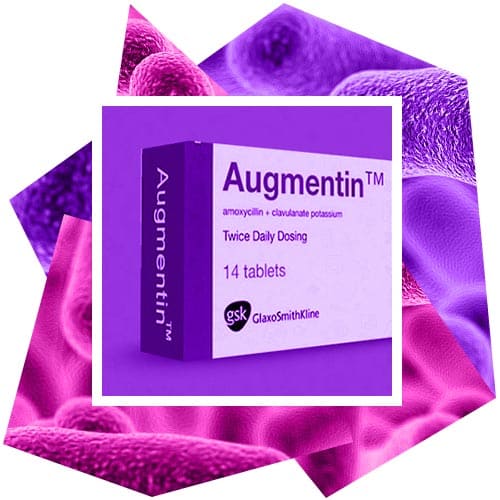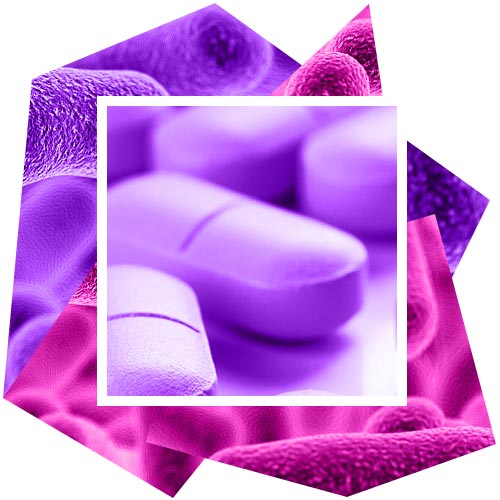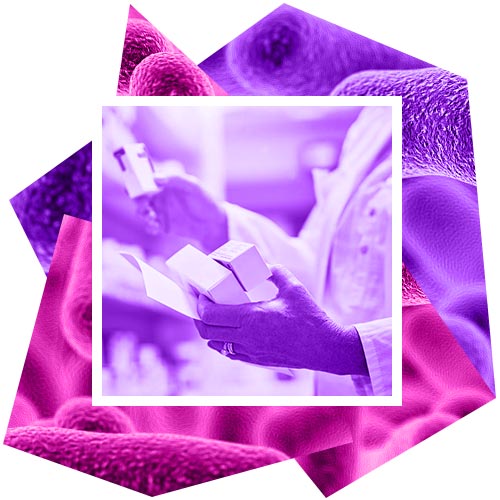Skin Infections
The skin is the largest organ of our body. It protects our internal organs from harm or damage. The main function of the skin is to safeguard the body against various infections which may otherwise prove detrimental. However, it is likely the skin becomes infected. Mostly, skin infections are the cause of a wide range of germs and symptoms which can differ between mild and serious depending on the infection. Some infections including mild ones can be treated by home remedies or with counter medications while others require treatment from a specialist.

Types of Skin Infections
Skin infections may be categorized into three or four types which include fungal skin infections, bacterial skin infections, viral skin infections, and parasitic skin infections. These types are discussed in further details as follows:
Bacterial skin infections: These are the most common types of skin infections whose severity range lies between mild and life-threatening. Another factor for the different type of bacterial skin infections is the type of bacteria, location of the infection, and the age of the individual suffering from the infection. These skin infections can normally be treated by a physician. On the other hand, serious bacterial infections need to be looked up by a dermatologist and in some cases, even by a rheumatologist.
Cause of Bacterial Skin Infection: This takes place when bacteria enter into the body through a cut or scratch but this doesn't mean that one will develop a skin infection when a cut is formed though it does increase the risk of infection in case of a weak immune system.
At the beginning of the bacterial skin infections, small and red bumps appear slowly and simultaneously an increase in size is observed. Mild bacterial infections can be cured easily with the help of topical antibiotics whereas other skin infections require oral antibiotics. Some bacterial skin infections are mentioned below.
- Leprosy: Mycobacteriumleprae or M.leprae for short is a bacterium which grows slowly and is the main cause of leprosy.
- Carbuncles: It is a skin disease formed under the skin rather than over the skin. The Cluster of boils are connected to one another which are red, painful, and swollen.
- Staph Infection: A small cut results in staph infection which may get infected with bacteria. Staph infections have a wide variety such as a simple boil, flesh-eating staph infections, or antibiotic-resistant staph infections.
- Cellulitis: This is the most common type of skin infection and soft tissues in which the bacteria enter into the skin through a break or opening and spread at a normal pace.
- Impetigo: One of the most contagious bacterial skin infections is impetigo. It attacks the exposed areas of the skin and can appear anywhere on the body.
Fungal Skin Infections: Fungi infections are common in just in human beings but other living beings as well. In human beings, the fungi take resident in an area of the body which causes fungal skin infections. This is too much for the immune system to handle. The fungus lives naturally in the air, soil, water, and even resides in the human body. Some of the fungi are helpful while others are harmful fungi similar to microbes. When harmful fungi attack the body, it may prove difficult to kill as they have the survival skills to live in the environment and strike the person again given the chance.
Common symptoms of fungal skin infections include itching, cracked skin, and skin changes that become red. They occur in the moist areas of the body such as the armpit or feet. Many fungal infections are not contagious or life-threatening. Below are some of the fungal skin infections as follows:
- Ringworm: Ringworm is caused by fungi that resides on dead tissues including hair, nails, and skin. Ringworm may eventually lead to athlete's foot or jock itch. It causes a red patch over the skin which may be itchy or scaly and over time it turns into a raised ring-shaped patch.
- Jock itch: One of the common fungal skin infections is jock itch. This skin infection occurs on warm and damp areas on the skin such as inner thighs, buttocks, and groin. So, it is more common in summer rather than in winters. Jock itch is slightly contagious and spreads through direct contact with the infected individual or a fungus carrying an object.
- Athlete's foot: A common misconception among people is the fact that athlete's foot is caused to athletes only. This is not the case as it can occur to basically everyone as all are prone to warm and moist environments. Athlete's foot multiplies quickly in summer. Blisters, peeling skin, itching, burning sensations or stinging on the affected area are some of the symptoms of athlete's foot.
- Fungal Nail infection: When a fungus attacks a toenail, fingernail, or the nail bed, then a fungal nail infection is likely to occur.
- Yeast Infection: The yeast infection takes place in women mostly. The overgrowth of Candida in women causes a disruption in the balance of the yeast and bacteria in the vagina. This happens because of stress, hormonal imbalances, antibiotics, or poor eating habits and also several other things. Candida bacteria also cause diaper rash and fungal toe infections.
Viral Skin Infections: The viral skin infections may be mild or serious depending on the type of infection caused. These infections are the result of the virus. Common types of viruses are part of the three groups which includes human papillomavirus, herpes virus, and poxvirus. The viral skin infections are easily transferrable to other human beings. Several of the viral skin infections have been mentioned as follows:
- MolluscumContagiosum: The molluscumcontagiosum is a type of viral skin infection in which papules are formed on the skin. Papules are pearls like bumps on the skin which may either be single raised or multiple raised
- Shingles: The virus that causes chickenpox results into shingles known as a varicella-zoster virus. It is basically the reactivation of the chickenpox virus. A red rash in the form of striped blisters appears on the skin that causes intense burning and pain. It usually appears on one part of the body such as the neck, face, or torso.
- Chickenpox: Chickenpox is the most common type of infectious disease which occurs during the childhood of a person. An itchy red rash appears all over the body of the individual undergoing skin infection. Although, it is quite rare for a person to get chickenpox if they got chicken pox in childhood.
- Warts: The raised bumps on the skin of any individual are warts and are caused by HPV that is human papillomavirus. Although warts are not dangerous they can be itchy, ugly, and contagious.
- Measles: Measles is a viral skin infection of the respiratory system. It is a contagious disease that can easily spread through direct contact with infected saliva or mucus. Also, the diseased person may infect others while coughing or sneezing thereby, releasing infections into the air.
Parasitic skin infections: This is another type of skin infections that are caused by a parasite. The parasitic skin infections can spread beyond the skin and spread into the organs and organs. Although parasitic skin infections are not life-threatening they can be uncomfortable. The different types of parasitic infections are stated as follows.
- Lice: These are blood-sucking insects that are small and wingless. Head lice are contagious and can easily be transferred from one human being to another. Adult lice, known as louse is the same size as that of a sesame seed. On the other hand, a nit is the same size as of a flake of dandruff.
- Scabies: Scabies is caused by the spreading of mites on the microscopic level on the skin. They can live for months on the skin if they are not treated. They occasionally appear on the surface of the skin and then go inside it to lay their eggs. This leads to the formation of the red rash on the skin which is itchy.
- Bedbugs: The bedbugs are small brown insects that suck the blood of human or animals for their survival. They have flat bodies but after taking in blood their bodies are swelled up and turn into a reddish color.
Symptoms of Skin Infections
The symptoms of skin infections differ in accordance with the type of skin infection caused. The most common type of symptoms that appear on the skin is rash and redness of the skin. Other symptoms experienced are a pain, tenderness, and itching.
It is highly advised to get treatment from a doctor if the skin infection does not show any sign of improvement or gets worse or pus-filled blisters are formed on the skin. There are some skin infections that occur not only on the skin but beyond such as the infections get into the bloodstream which can prove detrimental to the health.
The signs of a severe infection can be seen on the skin which includes pus, blisters, painful affected area, skin breakdown or dark necrotic looking skin.
Treatment of Skin Infections: The treatment of skin infections may vary depending on the severity and cause of the infection. Although, there are some infections which show improvement and fade away on their own in a matter of days or weeks.
Bacterial infections are cured by applying topical antibiotics over the affected area or can be treated by oral antibiotics. If the bacteria are resistive to the treatment given to it, then intravenous antibiotics may be required for the treatment of the infection.
Antifungal sprays and creams can be applied over a fungal skin infection to treat it. If there is no improvement in the infection, the doctor is likely to prescript oral medicines or topical creams. Medicated creams can be applied to cure parasitic skin infections. In addition, anti-inflammatory drugs may be given by the doctor in order to reduce discomfort. Certain bacteria including the MRSA is resistive to the antibiotics taken by the infected person and hence are very difficult to treat.
Also, using antibiotic treatments shows the signs of improvement within 2 or 3 days. If the infection does not improve or further deteriorates, then one should contact their doctor right away. The full antibiotics course must be completed by the infected person prescribed by the doctor unless stated. Another thing that should be kept in mind is that the length of the treatment varies on the type and severity of the skin infection. The affected area should be treated with good hygiene.

Home care and other treatments: Home care treatments may be used by an infected person. These home treatments can be done in order to reduce the symptoms of skin disease to a considerate level. There are many home care treatments that can be used but a few of them are mentioned below as follows:
- Applying cold objects to the affected area compresses the skin. This can be done several times a day in order to lessen the effect of inflammation and itching.
- To decrease itching, antihistamines can be taken by the infected person
- Itching and discomfort can be reduced by applying ointments and topical creams.
Prevention from Skin Infections: There are multiple ways one can prevent themselves from the potential risk of a skin infection. One of the best ways is to wash one's hands frequently. For the proper washing of the hands, follow the guidelines as stated:
- Wet the hands with clean water preferably hot water and apply soap on the hands.
- Rub the hands together in order to form lather and scrub the fingers and palms for almost 20 seconds.
- Rinse the hands well and dry them using a towel, tissue paper, or an air dryer.
- Also, make sure to turn the facet off using a paper towel.
If soap and water are unavailable and the hands are not dirty, then an alcohol-based hand sanitizer can be used to clean the hands.
 AU
AU UK
UK CA
CA DE
DE FR
FR IT
IT ES
ES






